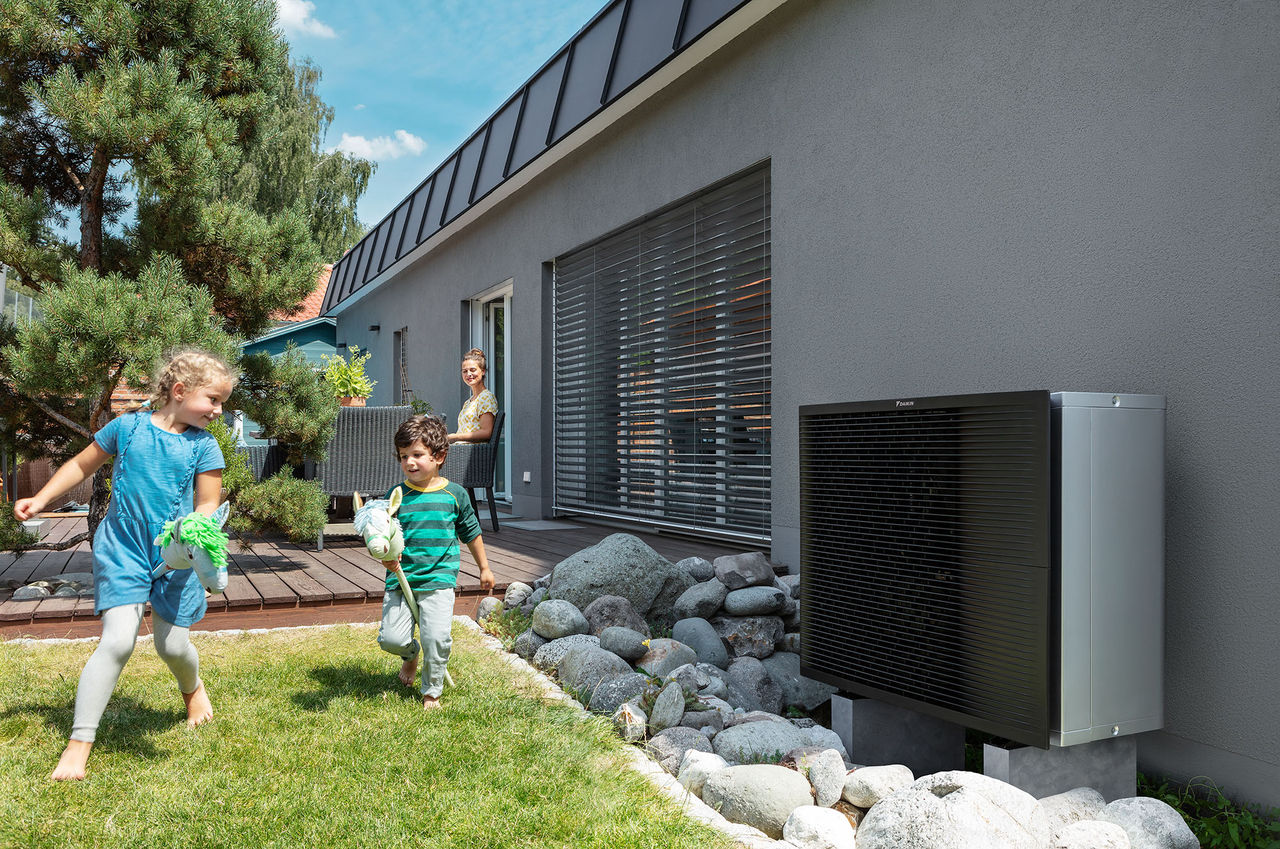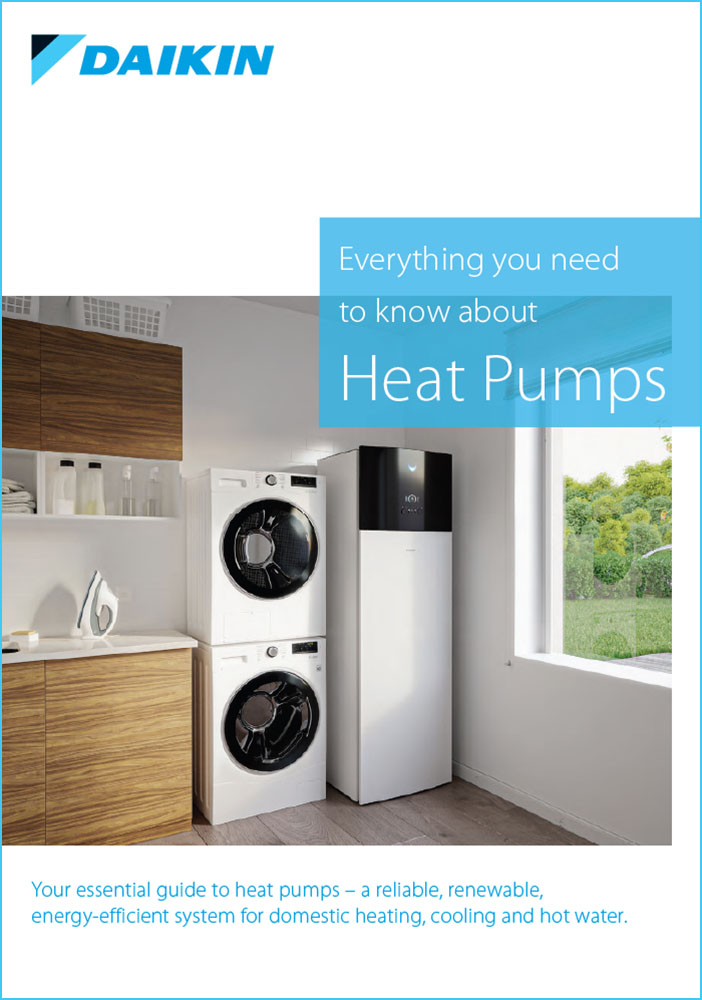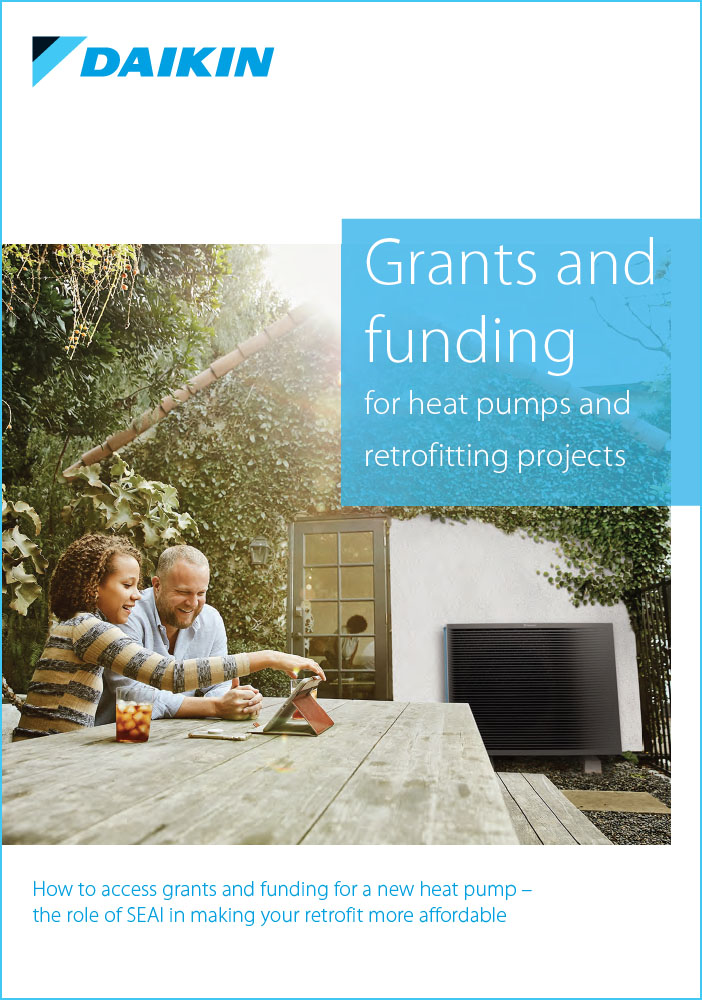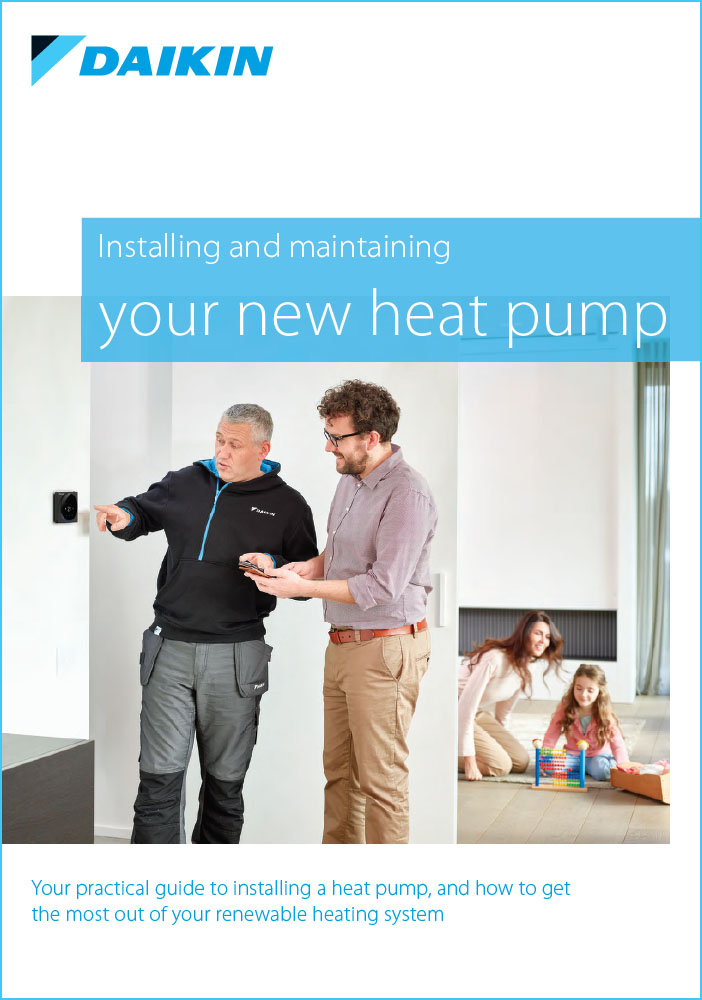
If you’re one of the thousands of people around Ireland building your own house, there’s a 95% likelihood that your new home will feature an electricity-powered heating system – chances are, it will be a heat pump. There are numerous reasons for this but they can probably be best encapsulated in one word: efficiency.
Because heat pumps use far less energy than traditional heating systems, notably oil or gas boilers, they are incredibly efficient and economical to run. And because they run on renewable energy, heat pumps are also the most sustainable way to provide heating and hot water for all your family’s needs.
For anyone at the beginning of their self-build journey, let’s look at seven key stages on your way to heat pump heaven!
1. Understanding the technology
An air-to-water heat pump – the most popular type of heat pump sold in Ireland – is an electrical device that takes energy from the outside air and transfers it inside the home to provide heating (radiators and/or underfloor heating) and hot water. Air-to-air heat pumps can provide heating and cooling, like an air-conditioning system, as well providing your hot water needs, and are used in small properties like apartments and duplexes.
Heat pumps and well-insulated buildings, such as new build houses, go hand in hand, giving you reassurance that you have chosen the most efficient heating system. Even better, heat pumps run mostly on renewable energy – for every 1kW of electricity that a Daikin heat pump consumes, it generates 3kW of energy from the outside air, even on the coldest day.

2. Planning from the outset
If you are planning to install a heat pump in your new build home, it’s vital that you factor this into the design process from the outset. When it comes to incorporating a heating system, architects will look at passive design, including the building’s solar orientation, and then active design which includes elements like insulation, windows and doors, and of course heat pump.
By including your heat pump in the conceptual and functional design of your new home, you can be sure that both passive and active elements are all geared towards extracting the best possible performance from the system.
3. Choosing the right heat pump
The majority of heat pumps that will be installed in new build homes in Ireland this year are air-to-water models, which can be low, mid or high-temperature. Low-temperature heat pumps are for systems that don't require water temperatures higher than 55°C. These are best suited to new build homes and can connect to underfloor heating and low-temperature radiators.
When it comes to sizing the correct heat pump for your new home, you will need to look at hot water requirements as well as the heat loss of the property. The latter is a calculation of the amount of energy that will be lost through the fabric of the building (floors, walls etc) and through ventilation points. Your local installer or contractor can advise on the correct size of unit for your home.

4. Where to position the indoor/outdoor units
Where you position your heat pump system depends on the size and configuration of the property. Typically, the indoor unit would be placed in the utility or plant room along with other appliances, which is why many homeowners opt for the Daikin Altherma 3 R F unit, whose compact 600 x 600mm footprint corresponds with most whitegoods.
Outdoor heat pump units, meanwhile, have become smaller, quieter and sleeker in design over the years, so it is easier to choose a location that does not detract from the architectural design. Most homeowners choose a position that’s close to the indoor unit but also quite discreet, such as the side of the house. Again, an early conversation with your architect will provide direction.
5. Installing your new heat pump
By this stage of the journey, you will likely have had multiple conversations with your local heat pump installer, who will manage all aspects of the installation including ordering and delivering the unit. With new build homes, it’s vital to plan the installation of the heating system in tandem with other building work that is taking place.
Equally, it’s important to use a Daikin-trained heat pump installer to manage your installation. This will ensure the correct placement of the indoor/outdoor units, giving you peace of mind that your new heat pump is set up to work at maximum efficiency.
6. How to operate the system
Once your heat pump has been installed, your installer will give you a demo of the system and a full run-through of how everything works. This includes instructions on how to download our nifty Onecta app, which allows you to change the thermostat, set temperature schedules and control your comfort levels no matter where you are.
Once the system is up and running, there’s very little you have to do – the heat pump will work away on its own. If you have any questions or issues, your local installer will be on hand to assist. You should also register your heat pump on the Daikin Stand By Me customer portal to ensure your warranty is activated.

7. Getting the most out of your heat pump
Going forward, there are a few things to keep an eye out for, and we have covered these in detail in a recent blog. They include not adjusting your settings – which have already been configured for maximum efficiency – and making sure nothing is covering or blocking air flow to your heat pump, which could make the heat pump less efficient and therefore increase running costs
Beyond that, make sure you get your heat pump serviced at least once a year as per the terms of your warranty, and keep a close eye on the system in case anything looks or sounds unusual. Again, for any technical queries you should start with your local installer.
By properly maintaining your new heat pump, you can ensure it is operating efficiently all the time, which means you are getting the full energy-saving potential out of the system and achieving reliable, sustainable comfort all year round. Good luck with your new home.
Browse the Daikin range of heating and hot water solutions for Irish homes here.
Learn more about heat pumps
Visit our Daikin Delves In video series and homeowner brochures below
Find your local Daikin partner installer
Find your local Daikin partner installer here and start the conversation about renewable heating and your very own home energy upgrade today.



